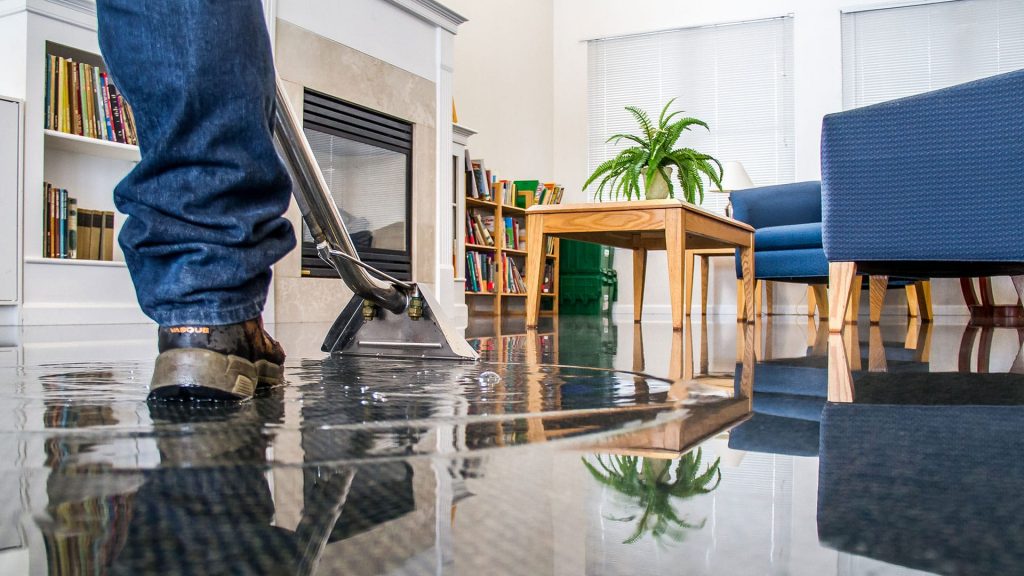Do's & Don'ts of Water Restoration.
Do's & Don'ts of Water Restoration.
Blog Article
We've noticed this great article on Preventing Fires and Water Damage In Your Home listed below on the web and felt it made perfect sense to relate it with you on this page.

Water offers life, but water breach on some parts where it's not intended to be can result in damage and aggravation. If the water leaks right into your structure, it can peel away the surface area as well as deteriorate the material's foundation. Mold and mold additionally thrive in a damp setting, which can be harmful for your and also your household's wellness. Furthermore, residences with water damages odor old and mildewy.
Water can originate from several resources like typhoons, floodings, ruptured pipelines, leaks, and sewer problems. It's much better to have a functioning understanding of security precautions if you have water damages. Below are a few guidelines on just how to manage water damages.
Do Prioritize Home Insurance Policy Insurance Coverage
Seasonal water damage can come from floodings, seasonal rains, and wind. There is additionally an event of an unexpected flood, whether it originated from a defective pipeline that instantly bursts into your residence. To shield your house, get home insurance that covers both disasters such as natural tragedies, and also emergencies like broken plumbing.
Do Not Neglect to Shut Off Utilities
When calamity strikes as well as you're in a flood-prone location, shut off the primary electric circuit. Shutting off the power protects against
When water comes in as water offers as a conductor, electrical shocks. Don't neglect to switch off the main water line shutoff as a method to stop more damage.
Keep your furnishings secure as they can relocate around and cause added damage if the floodwaters are obtaining high.
Do Stay Proactive and also Heed Weather Signals
If you live in a location pestered by floods, remain ready and positive at all times. Listen to the information and emptying cautions if you live near a body of water like a river, lake, or creek .
Do Not Overlook the Roof
Before the weather condition transforms terrible and also for the even worse, do a roofing evaluation. A much better practice is to have an annual roof assessment to alleviate future issues and complex issues. A good roof with no holes and leakages can be an excellent guard versus a tool and also the rainfall to prevent rain damage. Your roofing contractor needs to deal with the faulty gutters or any other indicators of damage or weakening. An evaluation will avoid water from moving down your walls and saturating your ceiling.
Do Pay Attention to Tiny Leaks
There are red flags that can attract your focus as well as show to you some damaged pipelines in your home. Signs of red flags in your pipes include bubbling paint, peeling wallpaper, water streaks, water stains, or dripping sounds behind the walls. Repair service and examine your plumbing fixed prior to it results in huge damage to your residence, finances, and a personal headache.
Don't Panic in Case of a Ruptured Pipeline
Timing is vital when it comes to water damages. If a pipe ruptureds in your home, immediately closed off your main water valve to reduce off the source and also avoid even more damage. Call a credible water damages restoration expert for assistance.
Water provides life, yet water invasion on some components where it's not expected to be can result in damages and also aggravation. In addition, residences with water damage smell old and also mildewy.
Seasonal water damages can come from floods, seasonal rains, and also wind. Signs of red flags in your pipes consist of gurgling paint, peeling off wallpaper, water streaks, water spots, or trickling sounds behind the walls. If a pipeline ruptureds in your home, right away closed off your main water valve to reduce off the resource and avoid more damages.
Water Damage Do's and Don'ts
Do's
Always use rubber gloves to protect your hands & rubber boots to protect your feet and legs. Damage from water and bacteria growth can begin within hours. Call for professional help. Remove as much water as possible by mopping and blotting with sponges. Pull up wet rugs and carpets if hardwood floors are below. Lift draperies off the floor, loop through a coat hanger and place the hanger on the drapery rod. Wipe furniture, prop up wet furniture cushions for even drying and place aluminum foil under furniture legs. Move photos, paintings, art objects, computers, other electronics and valuables to a safe, dry location. Do not remove books from shelves. Pack them tightly to prevent page warping until a restoration professional can begin this specialized drying. Ventilate wet areas. Turn on air conditioning for faster drying in summer (only if there is no visible mold) and winter, alternate cycles of opened windows and heating. Also, open drawers, closets and cabinet doors to enhance drying. Don'ts
Do not enter rooms where there is wet and sagging ceiling! Do not enter a room with standing water until electricity has been turned off. Do not use a regular household vacuum to remove water. Use heat to dry closed building interiors. Mildew and more moisture damage can occur. Do not use electrical appliances while on wet carpet or flooring. Do not disturb visible mold. https://www.myknowledgebroker.com/blog/personal-insurance/water-damage-dos-and-donts/

I'm very eager about Reducing Your Risk Of Water And Fire Damage At Home and I'm hoping you liked our piece. For those who liked our blog posting plz don't forget to pass it around. Thank you for your time. Kindly come visit our site back soon.
Report this page